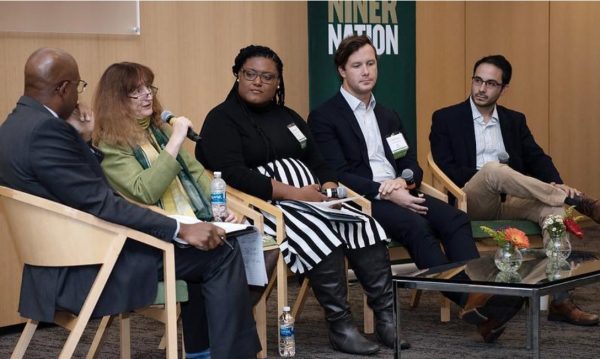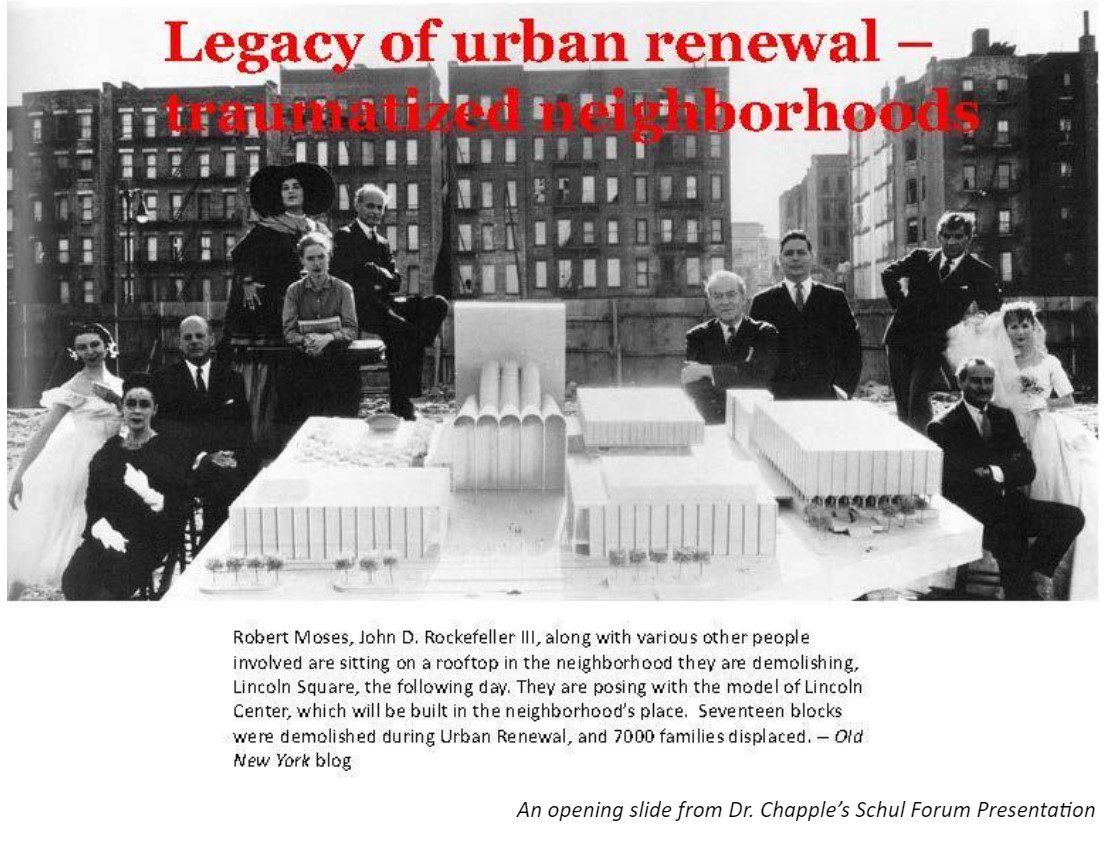Does development mean displacement? Four Takeaways from the 2022 Schul Forum

Does development mean displacement? Four Takeaways from the 2022 Schul Forum
At the recent 2022 Schul Forum, we examined development and displacement with the help of our keynote speaker, Dr. Karen Chapple, and a local panel. We also got a brief overview of data tools in our community that help us understand displacement risk and our challenges and progress around economic mobility in the city and region. And we celebrated our Gambrell Faculty Fellows. The videos of our speakers and panel discussions are now available.
So what did we learn about transit-oriented displacement and solutions?
High level – it’s complicated. The country’s most extensive research to date on displacement due to transit development was conducted by our Gambrell Faculty Fellows, Dr. Elizabeth Delmelle and Dr. Isabelle Nilsson. Their work showed no direct connection between transit development and household displacement, including the initial leg of our CATS Blueline. Dr. Chapple and her team’s work, including their extensive review of research on transit around the world, show a similar lack of evidence on direct transit-related displacement.
But Chapple’s work, as well as that of Delmelle and Nilsson’s team, also demonstrate the ongoing churn and movement of low-income rental households, often in a “regional chain of displacement.” This occurs with or without gentrification, and the churn happens before and after transit development. And it often displaces the same communities who were removed by federal policies around urban renewal and highway construction, leading to “double jeopardy,” a feature of systemic racism.

It’s also complicated because as Chapple and panelist Ely Portillo noted, housing is an everything issue, connected to important education, health, and economic outcomes for the household and the broader region. As such, it involves the interests of many different stakeholders, often with conflicting interests and contradictory aims.
Displacement is a process, not an event. Because of its churn and chain nature, displacement is better understood as an ongoing phenomenon rather than a discrete event. This is a key take away from the community-based participatory work that Chapple’s team engaged in with community-based organizations in the San Francisco region.
The quantitative research methods and models we often use to understand displacement treat it as a discrete event, however, providing an incomplete picture of displacement in a community and region. As Chapple noted, limited proxies and time frames for displacement in our quantitative models often lead to incomplete or oversimplified findings that don’t account for the more complex realities of displacement. She and her team incorporated qualitative research and community perspectives to provide a more robust and complete understanding of the nature of displacement in the San Francisco Bay area.
We should take an “all of the above” approach. Since displacement is a multi-faceted process and housing is an “everything” issue, our region needs to address it using multiple tools including housing production, housing preservation, and tenant protections. We should also understand the implications and trade-offs of those tools in the local context and adjust accordingly.
Locally, we are implementing some key best practices, including community land trusts and preserving existing affordable housing, as discussed by two of our panelists Charis Blackmon, Executive Director of the West Side Community Land Trust and Mark Ethridge of Ascent Real Estate Capital. But all panelists noted the importance of scaling resources for these and other solutions, as well as embracing innovation across our region to better address displacement and the overall lack of affordable housing.
“The displacement of one household is one too many” is a key takeaway from the event and serves as a grounding and guiding assumption for Dr. Chapple and her team’s work. This is a different starting place than the assumptions often built into transportation and housing policy solutions, typically geared toward greatest good for the greatest number of people. Dr. Chapple’s work reminds us that if households are left out of our solutions and if those households are the same communities historically and consistently displaced, then we really don’t have the right mix of effective local policies and strategies.
See the Schul Forum presentation and conversation for yourself: Dr. Chapple and the local panel that joined her are available here. The first panel that focused on local and regional data tools is also available here and we will highlight that conversation in a future newsletter.